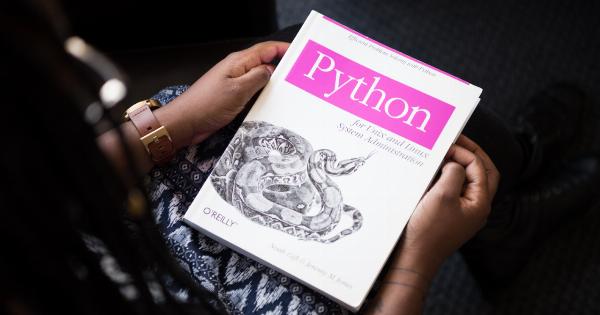In recent years, there has been a widespread belief that boys are more competent in mathematics than girls. This stereotype has persisted for decades, leading to a significant gender gap in the STEM fields.
However, numerous research studies and data analyses have now debunked this myth, revealing that both boys and girls possess equal potential to excel in mathematics. This article aims to explore the factors behind the misconceptions, shed light on the truth, and highlight the importance of encouraging both genders in the pursuit of mathematical excellence.
The Historical Perspective
Historically, mathematics has been perceived as a domain dominated by male scholars. This perception can be traced back to ancient times when societal norms limited women’s access to education and intellectual pursuits.
As a result, fewer women had the opportunity to showcase their mathematical abilities, reinforcing the misconception that women were inferior in this field.
During the 19th and early 20th centuries, women faced significant barriers to pursuing mathematical careers. They were often discouraged from studying advanced mathematics and were excluded from prestigious academic institutions.
This exclusion effectively limited the number of women who could make significant contributions to the field, further contributing to the stereotype that mathematics was a male domain.
The Shift in Perception
Thankfully, societal attitudes towards women’s education and gender equality have evolved significantly over time. The rise of feminism and advocacy for equal opportunities has led to a notable shift in perception.
As a result, girls today are encouraged to pursue STEM subjects, including mathematics, with equal enthusiasm as their male counterparts.
Breaking Stereotypes with Evidence
Extensive research has shown that there are no innate differences in mathematical abilities between boys and girls.
One influential study conducted by psychologist Janet Hyde and her colleagues analyzed data from 242 studies, involving over 1.3 million participants, and found that girls and boys have equal mathematical aptitude. This analysis debunked the notion that boys are innately superior in mathematics, highlighting that any differences observed are the result of external factors.
While boys may have historically outperformed girls on certain mathematical tasks, these differences can be attributed to societal influences and educational biases.
For example, when researchers examined test scores of boys and girls in math before the age of 14, they found no significant gender differences. However, as students progressed further in their education, girls’ performance began to lag behind. This shift can be linked to environmental factors such as stereotypes, lack of female role models, and implicit biases in teaching methods.
Stereotype Threat and Implicit Bias
The phenomenon known as stereotype threat plays a significant role in perpetuating gender gaps in mathematics.
Stereotype threat occurs when individuals are aware of negative stereotypes associated with their group and subsequently underperform due to anxiety and self-doubt. In the case of girls in math, the stereotype threat manifests as a belief that they are inherently worse at mathematics, leading to decreased confidence and motivation.
Furthermore, implicit biases held by teachers and parents can inadvertently influence their expectations of boys’ and girls’ mathematical abilities.
These biases can impact the quality of instruction and support provided, potentially hindering girls’ progress in mathematics. By recognizing and addressing these biases, educators and parents can create a more inclusive and supportive learning environment that nurtures mathematical excellence in both boys and girls.
Encouraging Gender Equality in Mathematics
To bridge the gender gap in mathematics, it is crucial to provide equal opportunities and support for both boys and girls. Here are some effective strategies:.
1. Challenging Stereotypes
Educators and parents should actively challenge the stereotype that boys are better than girls in mathematics.
By promoting the idea that both genders have equal potential, it allows students to develop a growth mindset, enhancing their confidence and motivation.
2. Providing Diverse Role Models
Exposing students to successful female mathematicians and scientists can have a profound impact on their self-perception and aspirations. Highlighting the achievements of women in mathematics helps dispel the myth that the field is exclusive to men.
3. Fostering Collaboration
Encouraging collaborative work and group problem-solving activities in the classroom can help create an inclusive environment.
By promoting teamwork, students learn to appreciate diverse perspectives and abilities, breaking down gender-related barriers.
4. Addressing Implicit Bias
Educators and parents must undergo implicit bias training to identify and challenge their subconscious biases. By addressing these biases, they can ensure fair treatment and equal opportunities for all students.
5. Providing Supportive Learning Materials
Creating learning materials that are gender-neutral and inclusive can empower both boys and girls in mathematics. Textbooks, worksheets, and online resources should feature diverse examples and scenarios, allowing all students to relate to the content.
Conclusion
In conclusion, the notion that boys excel in mathematics while girls lag behind is a deeply entrenched stereotype that lacks scientific evidence. Extensive research has shown that boys and girls have equal aptitude and potential in mathematics.
However, societal influences, stereotype threat, and implicit biases play a significant role in perpetuating the gender gap in this field.
By challenging stereotypes, providing role models, fostering collaboration, addressing implicit bias, and creating gender-inclusive learning materials, we can create a more equitable and supportive environment that encourages all students to excel in mathematics.






























